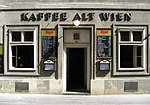The siege of Vienna, in 1529, was the first attempt by the Ottoman Empire to capture the capital city of Vienna, Austria, Holy Roman Empire. Suleiman the Magnificent, sultan of the Ottomans, attacked the city with over 100,000 men, while the defenders, led by Niklas Graf Salm, numbered no more than 21,000. Nevertheless, Vienna was able to survive the siege, which ultimately lasted just over two weeks, from 27 September to 15 October, 1529.
The siege came in the aftermath of the 1526 Battle of Mohács, which had resulted in the death of Louis II, King of Hungary, and the descent of the kingdom into civil war. Following Louis' death, rival factions within Hungary selected two successors: Archduke Ferdinand I of Austria, supported by the House of Habsburg, and John Zápolya. Zápolya would eventually seek aid from, and become a vassal of the Ottoman Empire, after Ferdinand began to take control of western Hungary, including the city of Buda.
The Ottoman attack on Vienna was part of the empire's intervention into the Hungarian conflict, and in the short term sought to secure Zápolya's position. Historians offer conflicting interpretations of the Ottoman's long-term goals, including the motivations behind the choice of Vienna as the campaign's immediate target. Some modern historians suggest that Suleiman's primary objective was to assert Ottoman control over all of Hungary, including the western part (known as Royal Hungary) that was then still under Habsburg control. Some scholars suggest Suleiman intended to use Hungary as a staging ground for further invasion of Europe.The failure of the siege of Vienna marked the beginning of 150 years of bitter military tension between the Habsburgs and Ottomans, punctuated by reciprocal attacks, and culminating in a second siege of Vienna in 1683.









